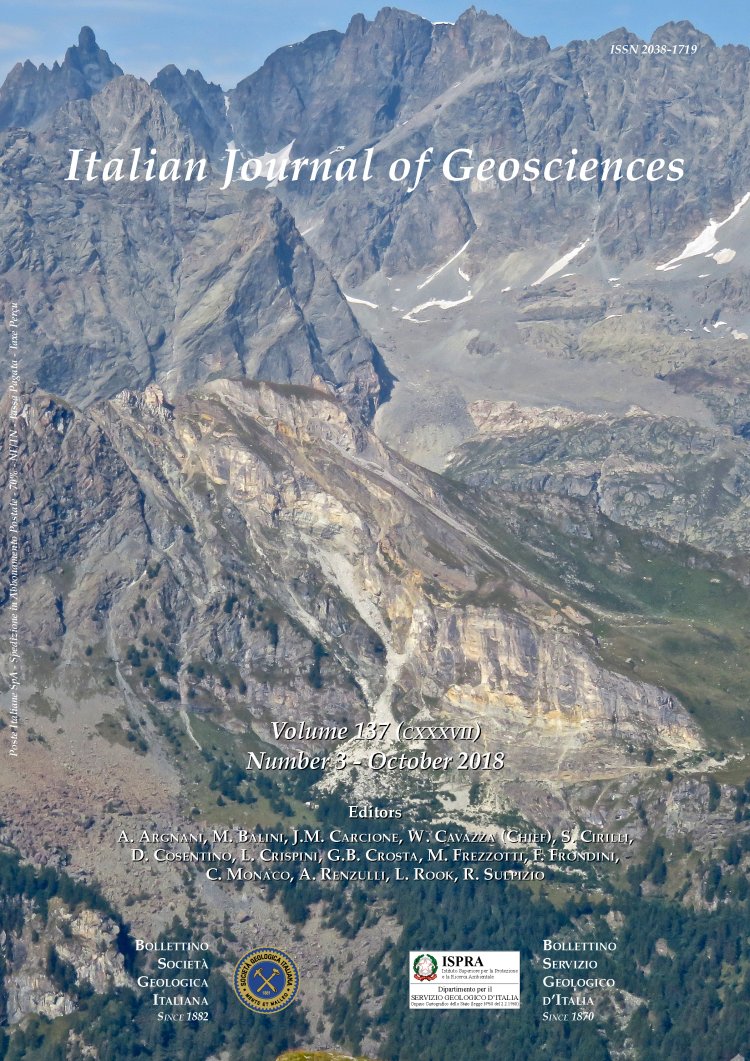
A review of MIS 7 and MIS 5 terrace deposits along the Gulf of Taranto based on new stratigraphic and chronological data
Vincenzo De Santis (1), Massimo Caldara (1), Trinidad Torres (2), José E. Ortiz (2) & Yolanda Sánchez-Palencia (2)
(1) Dipartimento di Scienze della Terra e Geoambientali, Via Orabona 4, Università degli Studi di Bari “Aldo Moro”, 70125 Bari, Italy.
(2) Biomolecular Stratigraphy Laboratory, Madrid School of Mines, C/Rios Rosas 21, E-28003 Madrid, Spain.
Corresponding author e-mail: vincenzo.desantis@uniba.it.
Volume: 137 (2018) f.3
Pages: 349-368
Abstract
We performed detailed geological and geomorphological
analyses on a well-exposed series of marine terrace deposits located
along a coastal area from the city of Taranto to the Bradano River in
the northern Gulf of Taranto (southern Italy). Absolute dating was
performed by applying amino acid racemisation (AAR) to ostracod
shells and isoleucine epimerisation (D-aIle/L-Ile) to Glycymeris sp.
shells. The combination of field geological surveys, remote sensing,
digital terrain model analysis, and absolute dating allowed us to study
a large number of stratigraphic sections as well as recognise and map three terrace deposits in the Apulian sector of the Gulf of Taranto that date to MIS 7.3, MIS 7.1 and MIS 5. A peculiar feature of the MIS 7.1 terrace deposit is the presence of biohermal and biostromal limestones rich in Cladocora caespitosa, calcareous algae and bryozoans; this feature contrasts with general context of the prevailing siliciclastic deposits.
Based on currently available data, we propose two hypotheses regarding the MIS 5 terrace deposit: 1) the MIS 5 terrace formed entirely during MIS 5.5; and 2) the MIS 5 terrace is a set of terraces that correlates to MIS 5.5, 5.3 and 5.1, in which the scarps and abrasion platforms have been partially masked by the superimposition of the so-called givoni, ridges that are elongated sub-parallel to the coastline.
Our data, combined with an extensive critical review of age dates in the literature, allow us to exclude the presence of an emerged marine terrace deposit of MIS 3.
We calculate the uplift rates of the MIS 7.3, 7.1, 5.5 and 5.3 palaeoshorelines. In the west sector, the mean uplift rates calculated for the recognised inner edges are MIS 7.3 = 0.65 mm/a, MIS 5.5 = 0.39 mm/a, MIS 5.3 = 0.31 mm/a; in the central sector the rates are MIS 7.3 = 0.485 mm/a, MIS 7.1 = 0.37 mm/a, MIS 5.5 = 0.35 mm/a, MIS 5.3 = 0.26 mm/a; in the east sector the rates are MIS 7.3 = 0.39 mm/a, MIS 5.5 = 0.25 mm/a, MIS 5.3 = 0.21 mm/a. These uplift rates show a uniform decreasing trend in time and space, proceeding from the western to the eastern sector, which allows us to hypothesise a slowing of the uplift phase characterising the foredeep, which began in the middle Pleistocene.
Keywords
marine terrace deposits, amino acid racemisation, allo-isoleucine epimerisation, southern Italy, MIS 5, MIS 7.
Get Full Text